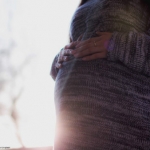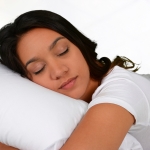Exercise plays a vital role in achieving and maintaining good health. Along with numerous other health benefits, recent studies have shown that exercise alleviates symptoms of depression and may be useful in treating mild to moderate major depressive disorder (MDD). A study by Dunn and colleagues (2005) examined the efficacy of exercise as a treatment for depression, along with the dose-response relationship of exercise and reduction in depressive symptoms.
The study included 80 patients between the ages of 20-45 who were diagnosed with mild to moderate MDD. Patients were randomized to one of four aerobic exercise treatment groups for 12 weeks that varied in intensity (17.5-kcal/kg/week (PHD condition) or 7.5-kcal/kg/week (LD condition)) and frequency (3 days/week or 5 days/week). The control group engaged in 3 days/week of stretching exercises lasting 15-20 minutes per session. The primary outcome measure was change in Hamilton Rating Scale for Depression (HRSD17) scores from baseline to 12 weeks of treatment.
The PHD condition was significantly more effective than both the LD and control conditions in reducing weekly HRSD17 scores. The LD condition was not significantly different from the control condition, and there was no main effect of exercise frequency at 12 weeks. Over 45% of subjects in the PHD group had a 50% reduction in baseline HRSD17 scores (a therapeutic response to treatment), and 42% of subjects in the PHD group had remission of depressive symptoms, defined as a HRSD17 < 7. This study suggests the determining factor for reduction and remission of symptoms is total energy expenditure, which can be achieved with 3-5 days/week of moderate-intensity physical activity.
Exercise is particularly attractive to consider during pregnancy and the postpartum period, when many women seek to minimize medication exposure during pregnancy and lactation. Preliminary data suggest that aerobic exercise has a significant positive effect on mood in perinatal women (Koltyn and Schultes, 1997; Polman et al, 2007). A study by Heh and colleagues (2008) randomly assigned 80 women with a 6-week postpartum EPDS score >10 (signifying postpartum depression) to one of two exercise groups: 3 exercise sessions/week, or the patient’s usual treatment (control group). Women who were in the exercise group had a significant improvement in mood by five months postpartum when compared to the control group.
Exercise is attractive during pregnancy and postpartum because of its low cost, accessibility, minimal side effects, and extensive health benefits. According to The American College of Obstetricians and Gynecologists, pregnant women are advised to participate in 30 minutes of moderate exercise on most days, unless other health conditions preclude this recommendation (Artal and O’Toole, 2003).
Take Home Message: Exercise should be included as an adjunct form of therapy for depression. At this time, the literature best supports that it be added to other treatments rather than taking the place of standard treatments such as medication or psychotherapy. Clinicians should discuss the benefits of exercise with their patients. Patients suffering from depression may have a harder time motivating themselves to exercise, and hearing such advice from a healthcare professional may provide the necessary incentive.
Marlene Freeman, MD
Rachel VanderKruik, BA
Dunn, A.L., Trivedi, M.H., Kampert, J.B., Clark, C.G., Chambliss, H. G., 2005. Exercise treatment for depression: efficacy and dose response. Am. J. Prev. Med. 28: 1-8.
Koltyn, K.F., Schultes, S.S., 1997. Psychological effects of an aerobic exercise session and a rest session following pregnancy. J. Sports Med. Phys. Fitness 37 (4), 287-291.
Polman, R., Kaiseler, M, Borkoles, E., 2007. Effect of a single bout of exercise on the mood of pregnant women. J. Sports Med. Phys. Fitness 47 (1), 103-111.
Heh, S.S., Huang, L.H., Ho, S.M., Fu, Y.Y., Wano, L.L., 2008. Effectiveness of an exercise support program in reducing the severity of postnatal depression in Taiwanese women. Birth . 35 (1), 60-65.
Artal, R., O’Toole, M., 2003. Guidelines of the American College of Obstetricians and Gynecologists for exercise during pregnancy and the postpartum period. Br. J. Sports Med. 37 (1), 6-12








Thank you – this was very helpful and helped motivate me to exercise more consistently during pregnancy
Woh I love your content, saved to fav!